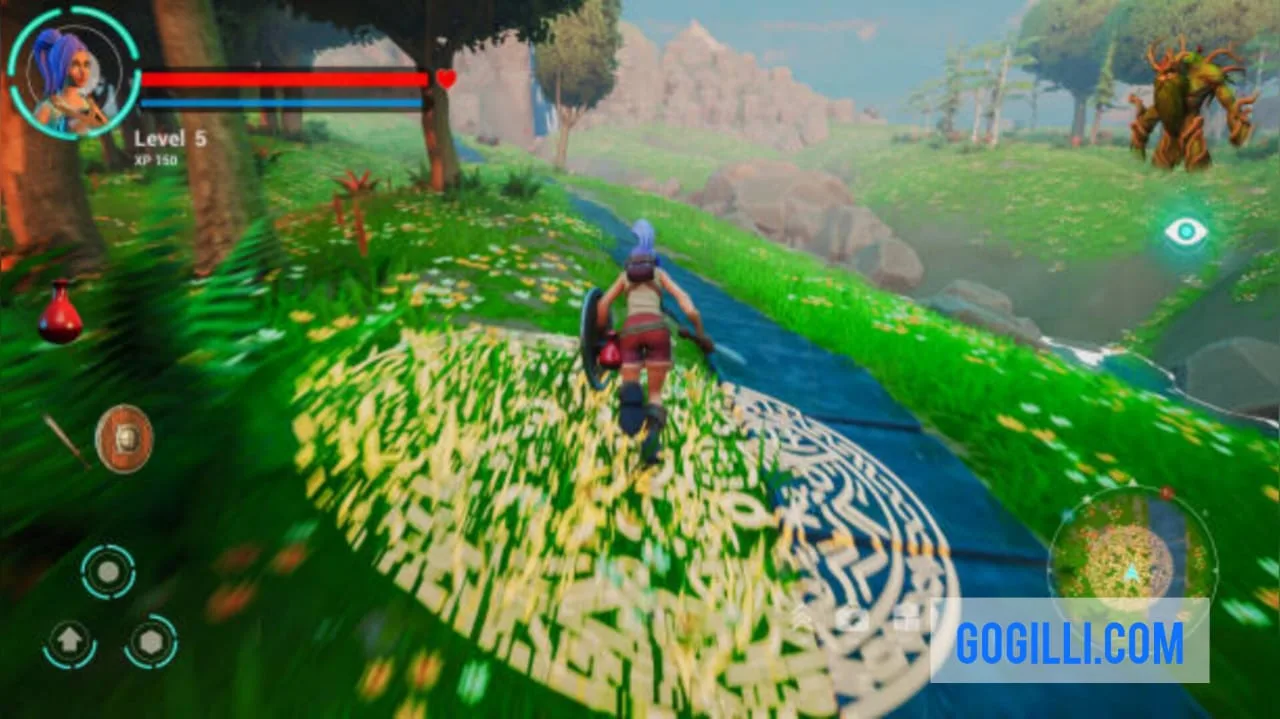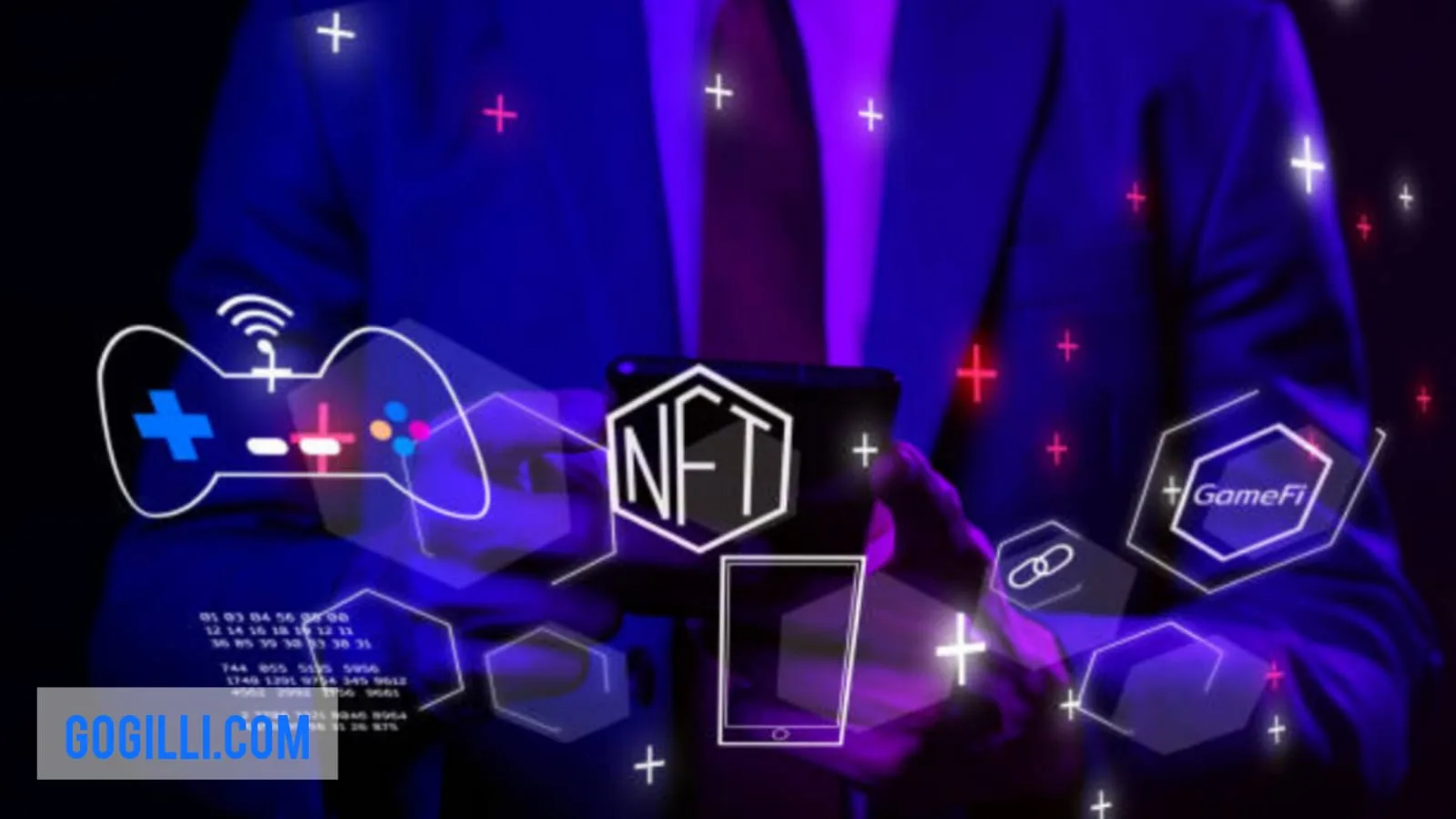Explore the exciting and inventive world of gaming development trends as they are emerging. For creators hoping to provide players with immersive and interesting experiences, staying ahead of the curve is crucial in the ever-changing gaming market.
The future of interactive entertainment is being shaped by trends in game creation, which are pushing limits and changing the way we play as technology develops.
We will look at a few of the major themes influencing how games are developed in the future in this article.
The Development of Visual Realism in Gaming with Next-Gen Graphics
The development of game graphics has been an interesting journey, driven by constant technological breakthroughs that push the limits of visual realism.
The graphical fidelity of gaming technology increases with each new generation, allowing developers to produce more realistic and immersive gaming experiences. Let’s examine the major turning points in the development of game graphics:
- The Eight-Bit Era (1970s–1980s):
- Graphics Style: 2D sprites and basic pixel graphics.
- Games that serve as examples are Super Mario Bros. and Pac-Man.
- Late 1980s to Early 1990s, or the 16-Bit Era:
- Graphics Style: More intricate sprites and improved color schemes.
- Games that serve as examples are Super Mario World and Sonic the Hedgehog.
- Age of 32/64 bits (mid-1990s):
- The addition of 3D polygons and textured environments are among the graphics features.
- Final Fantasy VII and Super Mario 64 are representative games.
- Late 1990s: Early 3D Acceleration
- Features for Graphics: With the advent of specialized graphics cards, 3D graphics have expanded.
- Quake and Tomb Raider are two representative games.
- Early 2000s, PlayStation 2 / Xbox Era:
- Features for the graphics include enhanced lighting effects, texturing, and 3D models.
- Metal Gear Solid 2 and Grand Theft Auto: San Andreas are two of the representative games.
- HD and Generation Seven (mid-2000s):
- Features for the graphics include realistic dynamics, high-definition (HD) images, and more intricate shaders.
- Games that serve as examples are The Elder Scrolls IV: Oblivion and Gears of War.
- 2010s, the Eighth Generation:
- Features for Graphics: 4K resolution, improved lighting effects, and more HD graphics refinement.
- Horizon Zero Dawn and The Witcher 3: Wild Hunt are two representative games.
- Ray Tracing in the Late 2010s and Early 2020s for 4K Gaming:
- Features for graphics include ray tracing for realistic lighting and reflections and the increasing standardization of 4K gaming.
- Exemplary Video Games: Cyberpunk 2077, Command.
- 2020s Next-Gen Consoles:
- Modern hardware, real-time ray tracing, quicker load times, and support for high refresh rates are some of the graphics features.
- Demon’s Souls (PS5) and Halo Infinite (Xbox Series X) are two representative games.
- Future Emerging Technologies:
- Features for visuals: Expected developments include enhanced AI-driven animations, lifelike visuals, and maybe virtual reality (VR) integration.
- Possible Representative Games: Virtual reality games with unheard-of degrees of realism that use sophisticated AI to generate dynamic stories.
- With continuous research into technologies like photogrammetry, machine learning, and AI-driven graphics that aim to further blur the boundaries between the virtual and the real, the future of gaming graphics is full of fascinating possibilities.
In the years to come, gamers can anticipate experiences that are more visually appealing and immersive as device capabilities continue to advance.

Unity Technologies is a prominent player in the game production industry, best recognized for offering the potent and adaptable Unity game creation engine. Game production has become more accessible to developers of all skill levels thanks in large part to Unity.
The following are some significant facets of Unity Technologies and how they affect the game production sector:
Unity Technologies: Providing Revolutionary Tools to Empower Gaming Creators
- Engine of Unity:
- Versatility: Unity facilitates the creation of games across a wide range of platforms, such as computers, gaming consoles, mobile phones, and headsets for virtual and augmented reality. Because of their adaptability, developers may produce games for a variety of platforms and players.
- Ease of Use: Unity is well known for having an easy interface and design that make it usable by both novice and seasoned developers. A more efficient development process is made possible by its visual scripting system, drag-and-drop capabilities, and comprehensive documentation.
- Community and Accessibility:
- Affordability: Independent developers and small studios with tight resources can use Unity because it provides a free version of its engine. When their projects and demands expand, developers can upgrade from the free version to the paid one.
- Rich Community: Unity boasts a sizable and vibrant developer community that exchanges information, resources, and fixes. A collaborative atmosphere where developers may learn from each other and solve common problems is fostered by online forums, tutorials, and community events.
- Asset Registry:
- Vast Marketplace: Developers can purchase and sell assets, tools, and plugins on Unity’s Asset Store. With the help of this ecosystem, developers can save time and money by incorporating pre-built assets into their projects.
- Plug-and-play Functionality: By quickly and easily incorporating items from the Asset Store into their applications, developers may add functionality and speed up development without having to start from scratch.
- Performance and Graphics:
- High-quality Graphics: Unity’s graphics capabilities have been continuously enhanced, allowing developers to make aesthetically attractive games. Realistic physics models, high-fidelity graphics, and sophisticated rendering techniques are all supported by the engine.
- Optimization: Unity offers performance optimization features that let creators make games that work flawlessly on a range of hardware setups.
- Getting Used to New Technologies:
- Support for AR and VR: Unity has been at the forefront of providing support for new technologies such as AR and VR. Developers can produce immersive experiences for VR headsets like the Oculus Rift, HTC Vive, and ARKit.
- AI-driven features and behaviors can be incorporated into games by developers thanks to Unity’s support for the integration of machine learning technology.
- Tools for Collaboration:
- Unity Collaborate: Unity provides capabilities for collaboration that make team-based game development easier. To facilitate team member collaboration, this contains tools for project sharing, cloud storage, and version control.
- Regular Updates and Enhancements:
- Updates Often: Unity Technologies provides updates frequently that bring along new features, enhancements, and optimizations. Because of this dedication to continuous development, developers will always have access to the newest tools and technology.
- By giving game developers the instruments and materials required to realize their imaginative concepts, Unity Technologies keeps empowering the gaming community.
- Unity has established itself as a mainstay in the game production industry thanks to its dedication to accessibility, community involvement, and technological advancement.

gaming communities:
creating relationships and encouraging cooperation among users
- Gamers’ relationships and cooperation are greatly enhanced by gaming communities. These communities give players a place to interact, exchange stories, and work together on different levels. The following are some ways that gaming communities support interpersonal relationships and teamwork:
Similar passions and interests:
- Passion for particular games or genres and common interests lead to the formation of gaming communities. The gamers can forge strong bonds with one another on this common ground.
Interaction and Communication:
- Player contact is facilitated by in-game communication tools, chat systems, and community forums. Having regular communication in the community fosters a sense of unity and belonging.
Cooperation & Teamwork:
- Cooperation and teamwork are essential in many games, particularly those that are multiplayer and team-based. Gamers can locate groups or individuals with similar interests in gaming communities, which promotes cooperative play.
Events and Tournaments:
- Collaborating is facilitated by planning and taking part in competitions or neighborhood events. By forming teams, working together on strategies, and competing against other groups, players can foster a sense of unity and common objectives.
Education and Transfer of Skills:
- Gamers with different skill levels are frequently found in gaming communities. New players can benefit from the guidance and understanding of more seasoned players, which fosters a positive learning atmosphere.
Social Links Outside of the Game:
- There are many gaming communities outside of the virtual realm. After meeting in person at events or through other social activities, players frequently develop friendships that extend beyond the game itself.
Community Obstacles and Triumphs:
- Establishing group objectives or challenges within the society promotes cooperation. Collaborating to accomplish goals such as reaching a specific level, finishing in-game tasks, or obtaining exclusive goodies amplifies the feeling of achievement.
User generated Content:
- Video instructions, mods, and other user-generated content are frequently produced and shared by gaming communities. Collaborative projects facilitate the growth of the community and give members the chance to work together on creative ideas.
Assisting Systems:
- A strong community can be quite helpful when playing competitively or when confronting in-game obstacles. Gamers can ask other members of the community for guidance, exchange strategies, and get support.
Inclusion and Diversity:
- Player communities from different backgrounds can feel welcome in gaming communities that actively support diversity and inclusion. Members of the community feel more united and understanding as a result of this inclusivity.
- To sum up, gaming communities are places where gamers can interact, work together, and create enduring relationships; they are more than just places to play games.
- These communities enhance the overall enjoyment of gaming for their members, whether via cooperative initiatives, shared victories, or mutual support.
Four Virtual Reality Innovations That Are Redefining Gaming as We Know It.
- Rethinking Video Games as We Know Them
- Several advancements in virtual reality (VR) as of January 2022, when I last updated my understanding, have the potential to completely change the gaming experience.
- Remember that there might have been further advancements since then. The following four virtual reality technologies shaped the gaming scene:
- Headsets for VR that are wireless:
- The headgear tethering to a PC or gaming console has limited movement and immersion, which has been one of the problems of virtual reality gaming.
- With wireless VR headsets like the ones from the Oculus Quest series players may walk around freely without being restricted by wires.
- By allowing for greater mobility and lowering the possibility of tripping over wires, this invention improves the overall gaming experience.
2.Tracking Hand Motion and Recognizing Gestures:
- Virtual reality games have traditionally required traditional VR controllers, but advances in hand-tracking technology hope to do away with the requirement for them completely.
- The user can now engage with virtual surroundings more naturally and intuitively because of the ability of cameras and sensors to track hand motions. This streamlines the user interface and creates new opportunities for gaming elements.
3.Haptic Input and Multisensory Perception:
- Virtual reality immersion extends beyond the senses of sight and sound. The goal of haptic feedback technology advancements is to replicate touch in virtual environments.
- Users can experience touch interactions with virtual reality (VR) gloves and suits that have haptic sensors built in, such as feeling the texture of virtual items or the effects of in-game actions. The overall realism and engagement of VR games are improved by this innovation.
4.Eye Tracking Devices:
VR gaming could be greatly impacted by another innovation:
- Eye tracking technology: VR systems can optimize graphics rendering by following a player’s eye movements and concentrating processing power on the parts of the virtual world the user is looking at.
- This enhances the visual quality overall and makes it possible to simulate depth of field and peripheral vision more realistically.
- It’s crucial to remember that the virtual reality industry is ever-evolving and that new advancements are always being made.
- These were some of the significant developments revolutionizing virtual reality gaming as of my last update. For the most recent information about VR gaming developments, I do advise consulting the most recent sources.
Technologies Immersive:
- The game experience is changing as a result of immersive technologies like augmented reality (AR) and virtual reality (VR). In particular, virtual reality (VR) has advanced significantly in recent years, enabling users to enter virtual worlds with never-before-seen levels of realism.
- Game creators are adding virtual reality (VR) components to their projects more often as hardware becomes more widely available and reasonably priced, giving players an incredibly immersive and engaging experience.
- Conversely, augmented reality (AR) creates a mixed experience by adding digital overlays to the real world, which expands the possibilities for gameplay.
- The promise of augmented reality was showcased by games such as Pokémon GO, and developers are already investigating ways to more smoothly incorporate this technology into many game genres.

Online gaming on the cloud:
- Another trend in the industry that is transforming is the rise of cloud gaming. Gamers can stream top-notch games straight to their devices without the need for powerful gear thanks to services like Google Stadia, Microsoft xCloud, and NVIDIA GeForce Now.
- This enables more flexible gaming experiences across various devices in addition to democratizing access to gaming.
- Additionally, game makers have additional chances thanks to cloud gaming. Games that were previously constrained by local hardware capabilities can now be created and optimized for the cloud, allowing for more intricate and resource-intensive experiences.
- As more players take advantage of the ease of on-demand gaming and internet infrastructure advances, there will probably be a continued move towards cloud-based gaming.
-

Cloud gaming
Procedural Content Generation with Artificial Intelligence (AI):
- The use of artificial intelligence in game production is becoming more and more significant. AI may improve gameplay in several ways, such as by making non-player characters (NPCs) more lifelike and dynamically changing difficulty settings in response to player performance.
- Another trend that is gaining traction is AI-driven procedural content creation, which frees creators from the necessity for manual design to construct expansive and dynamic game worlds.
- With the ability to create terrain, missions, and even entire levels, procedural generation algorithms provide players with an almost infinite number of options.
- In addition to cutting down on production time, this keeps gamers interested by providing them with different gameplay experiences every time.

NFTs and Blockchain in Gaming:
- Non-fungible tokens (NFTs) and blockchain technology integration is a movement that is upending established gaming paradigms.
- Blockchain offers a clear and safe method of controlling in-game purchases and assets. Through the use of NFTs unique digital assets kept on the blockchain players may own and exchange their in-game goods.
- The idea of ownership in games could be completely changed by this trend, wherein virtual assets have actual worth assigned to them by the players.
- To establish player-driven ecosystems and decentralized economies, developers are investigating how to incorporate blockchain technology and NFTs into games.

Playing Across Platforms and Advancement:
- The desire of gamers to have seamless device switching is fueling the growing need for cross-platform play and progression. Cross-platform games let players on various PCs, consoles, and mobile devices interact with one another while playing, promoting a more diverse gaming community.
- This is further enhanced with cross-platform progression, which enables users to keep track of their in-game purchases, achievements, and progress across several platforms. This improves the game experience for players and fosters a more varied and cohesive gaming community.
Changing Business Frameworks:
- The custom of buying a game altogether is changing, and several alternative business models are becoming more and more popular.
- There are more and more free-to-play games with in-app purchases, subscription services, and ad-supported business models available. To maintain a fair and pleasurable gaming experience for players, game creators are looking for creative ways to commercialize their creations.
- For a monthly charge, players can access an extensive library of games through subscription services like Xbox Game Pass and PlayStation Now, which make it more affordable and convenient to play a variety of games.
The economics of game production and consumption are changing as a result of these developing business models.
Game development’s interactive entertainment has a bright and promising future. Developers can now produce more inventive, inclusive, and immersive game experiences thanks to technological advancements.
The gaming industry is about to enter a new era that will change the way we play and interact with games, thanks to innovations like virtual reality and blockchain integration. Developers must embrace these trends to influence the direction of interactive entertainment in the future. It is not only a matter of choice.
The convergence of players, developers, and technology has placed the gaming industry in a position to offer experiences that were previously unimaginable.
The game industry is always changing and surprising us with new and innovative advancements, so the path ahead will undoubtedly be exciting.
